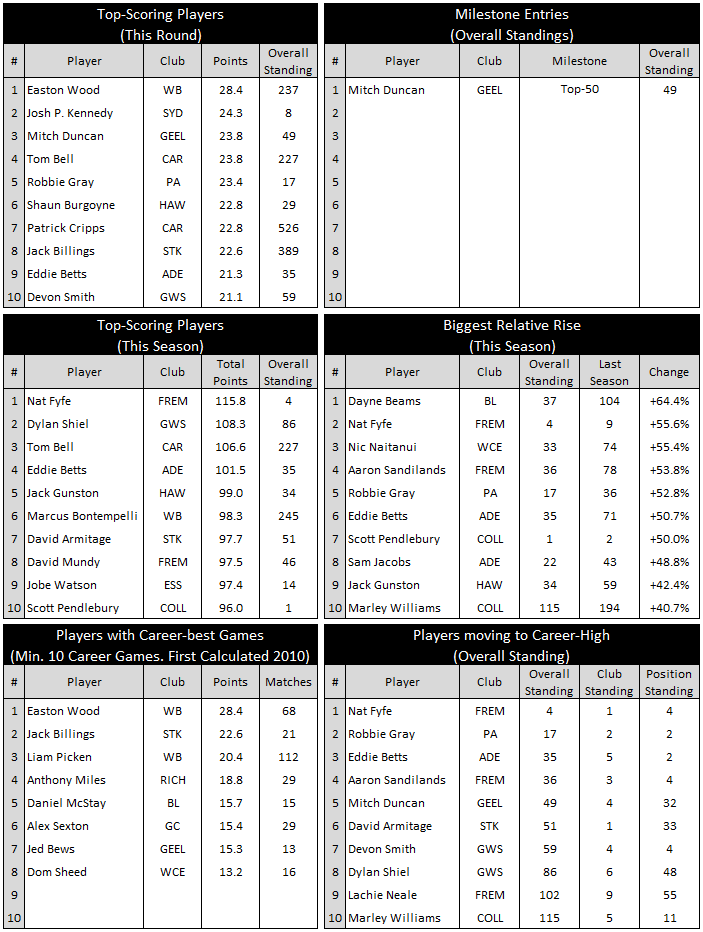SJ
Premium Platinum
I agree that was a weird case, one I have raised specifically before: http://www.bigfooty.com/forum/threa...-data-ranking-points-but-win-the-game.978389/I can't agree with there relative valuation of different acts since I don't have access to there very complicated formula/models. But what I do know is there ranking system can have some funny results which make me take it less seriously.
For example the 2011 grandfinal
http://www.footywire.com/afl/footy/ft_match_statistics?mid=5342
They gave Leon Davis 119 points,
even though his direct opponent scored the first two goals of the game and he was pretty meh,
His ranking is more than anyone on our team other than Selwood,
More than Hawkins (who changed the game after half time) 117
Bartel 95 (3 goals and the norm smith)
Even though we won quite comfortably in the end, 6 out of the top 8 ranked players played for Collingwood and as a team they still ranked more points then Geelong.








